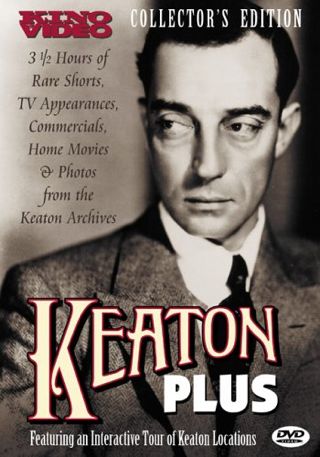Summary
This collection is not, primarily, meant for those interested in Keaton's artistry. This is mostly meant for those interested in what Keaton did after his decline during the early sound era, and also to hear accolades from fellow film greats like Orson Wells and Lilian Gish. There are two rare Keaton sound shorts from the 1930s made for Educational Pictures. They are mere curiosities with only glimpses of the considerable talent Keaton possessed. There are also TV appearances, including TV commercials. There are also (beware: extremely short) excerpts from "lost" silent films.
There are only two things that make this collection worth examining. The first is an interactive exploration of Keaton's film locations in San Francisco and Los Angeles, based on the book "Silent Echoes". I live in San Francisco and it's fun to see images of Buster fleeing the cops through neighborhoods I drive or walk through often (San Fran, unlike LA, has not changed that much in appearance since the 1920s). I'm not sure how interesting this part of the collection is to folks not familiar with SF or LA, but I liked it.
The real gem in this collection, which seems as out of place as caviar with table scraps, is the early Keaton short "Hard Luck". Although not his best short, the star imbues the film with an energetic freshness, reflecting someone entirely confident in his creative ability, even at this early stage of his career. It aptly illustrates Keaton's remarkable ability to invent funny situations out of mundane activities like fishing or riding a horse. One feels in "Hard Luck" a link to modern masters of comic improvisation like Jonathan Winters and Robin Williams, except in Buster's case the invention is entirely visual. There is also the inherent darkness in the Keaton character, who is spending much of the film trying, unsuccessfully, to commit suicide. What's remarkable about the Keaton character in the early shorts is that he can pull off the allusion to despair and hopelessness while keeping the film light, fresh and energetic. Chaplin sometimes hits the audience over the head with pathos; never Keaton.
On the whole, however, I would not recommend this collection except for those who are seeking a complete Keaton library.


